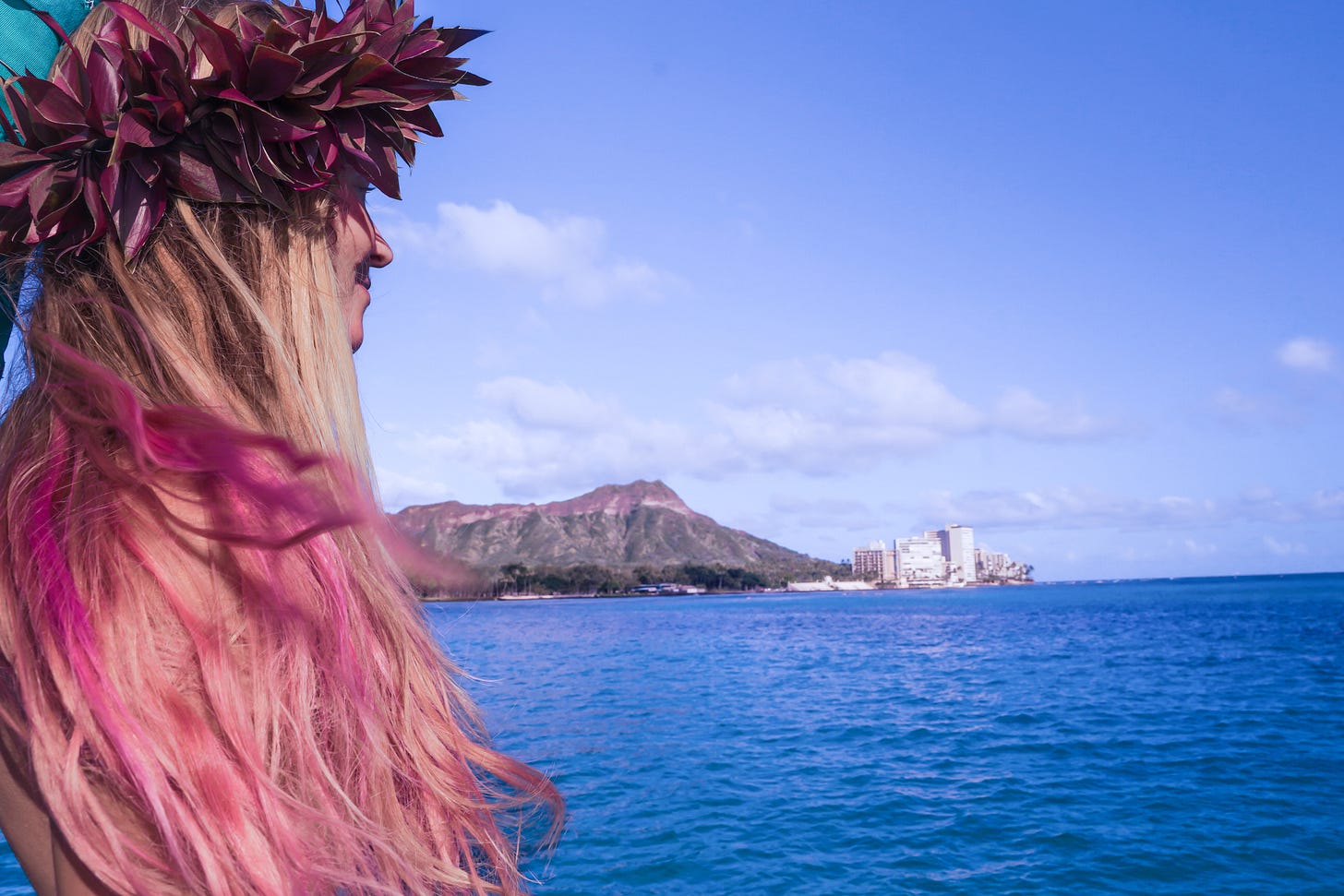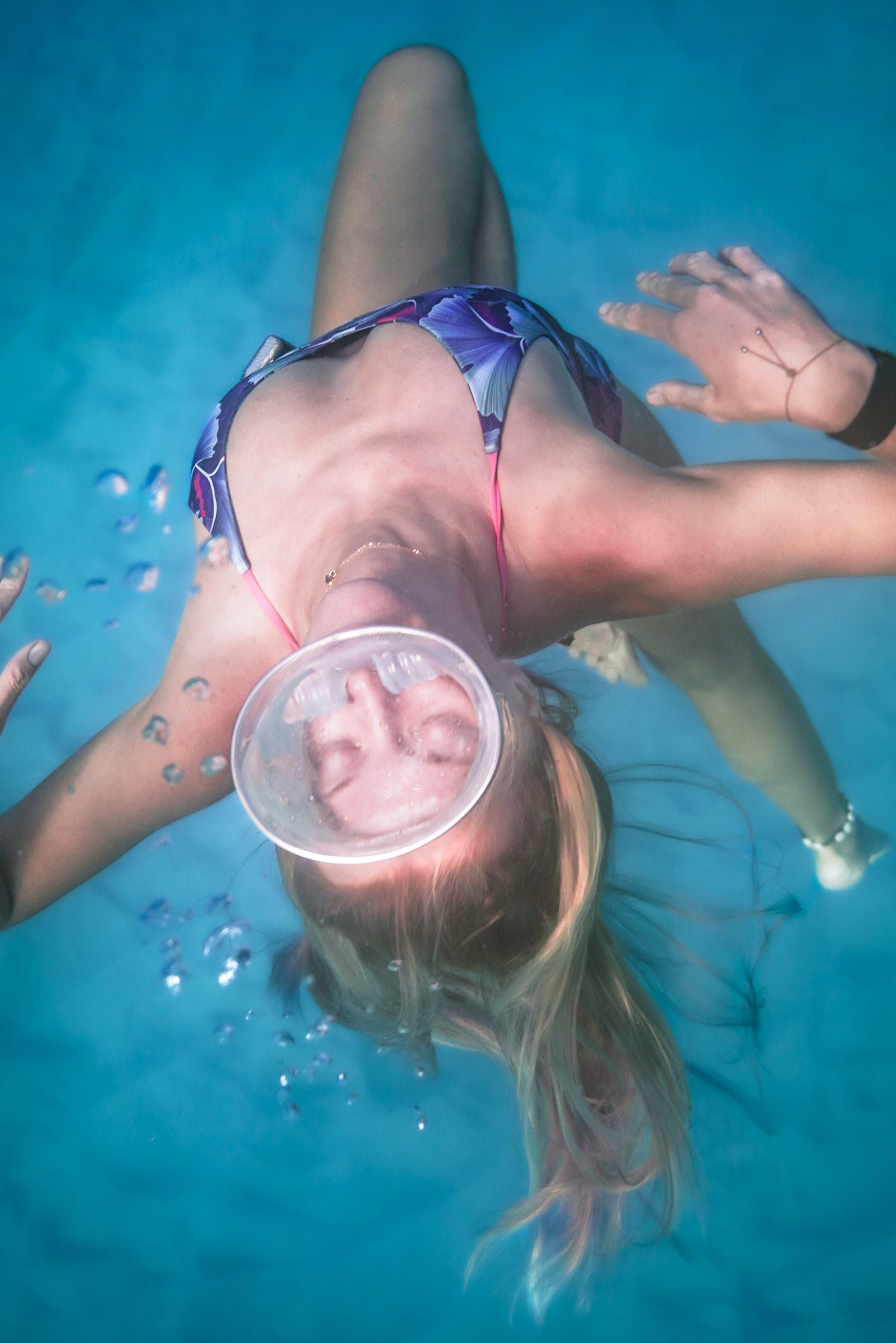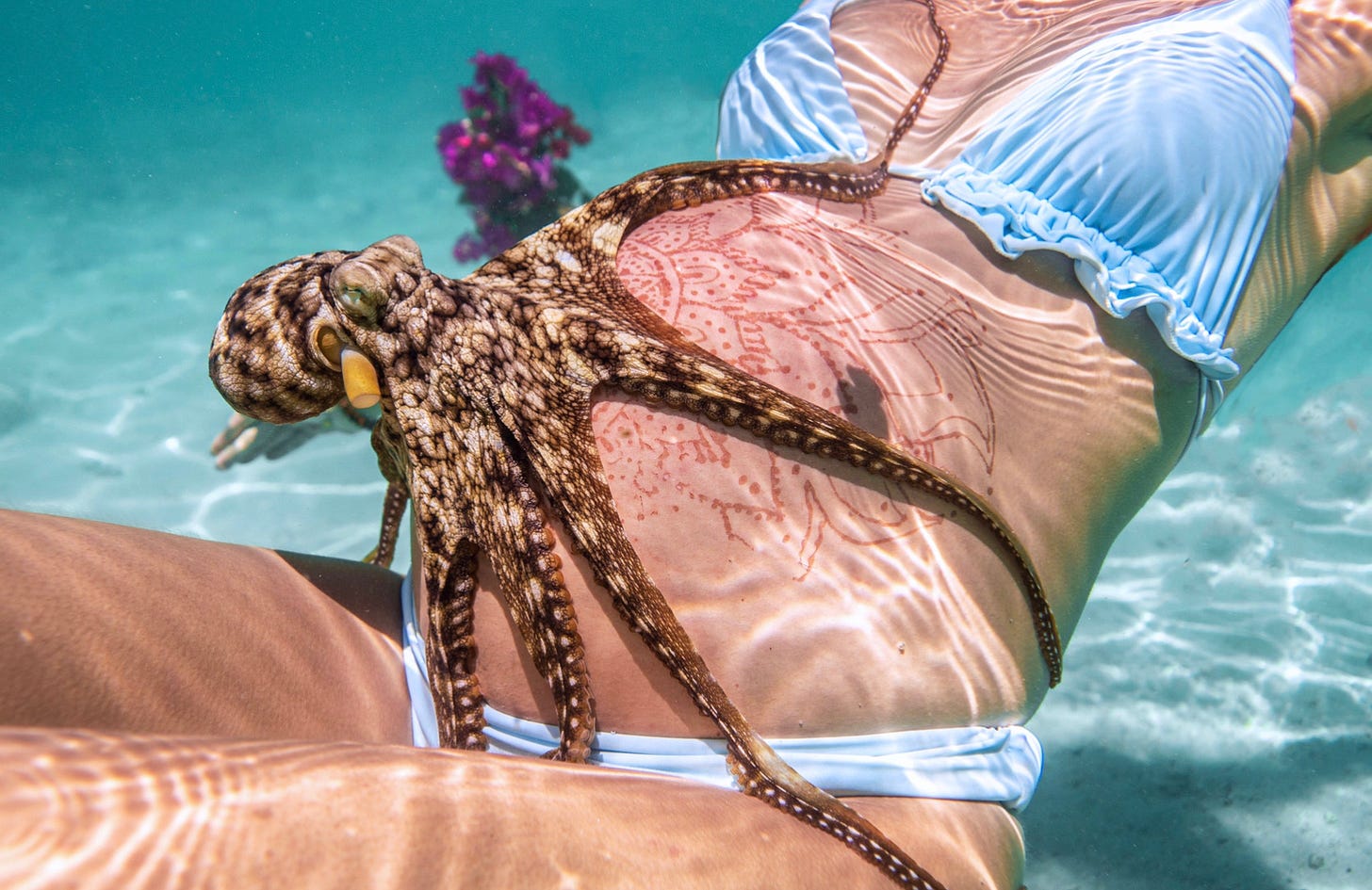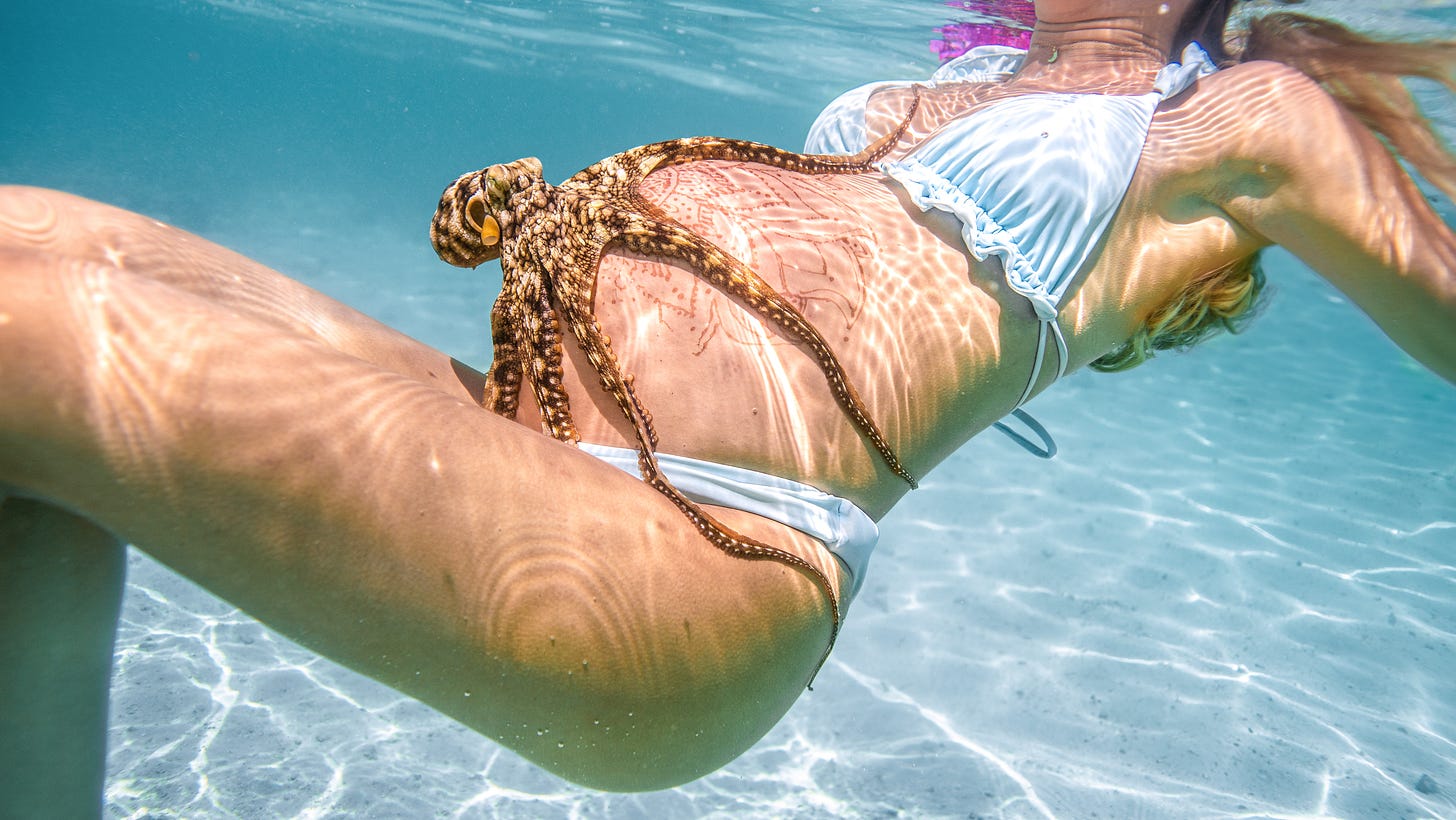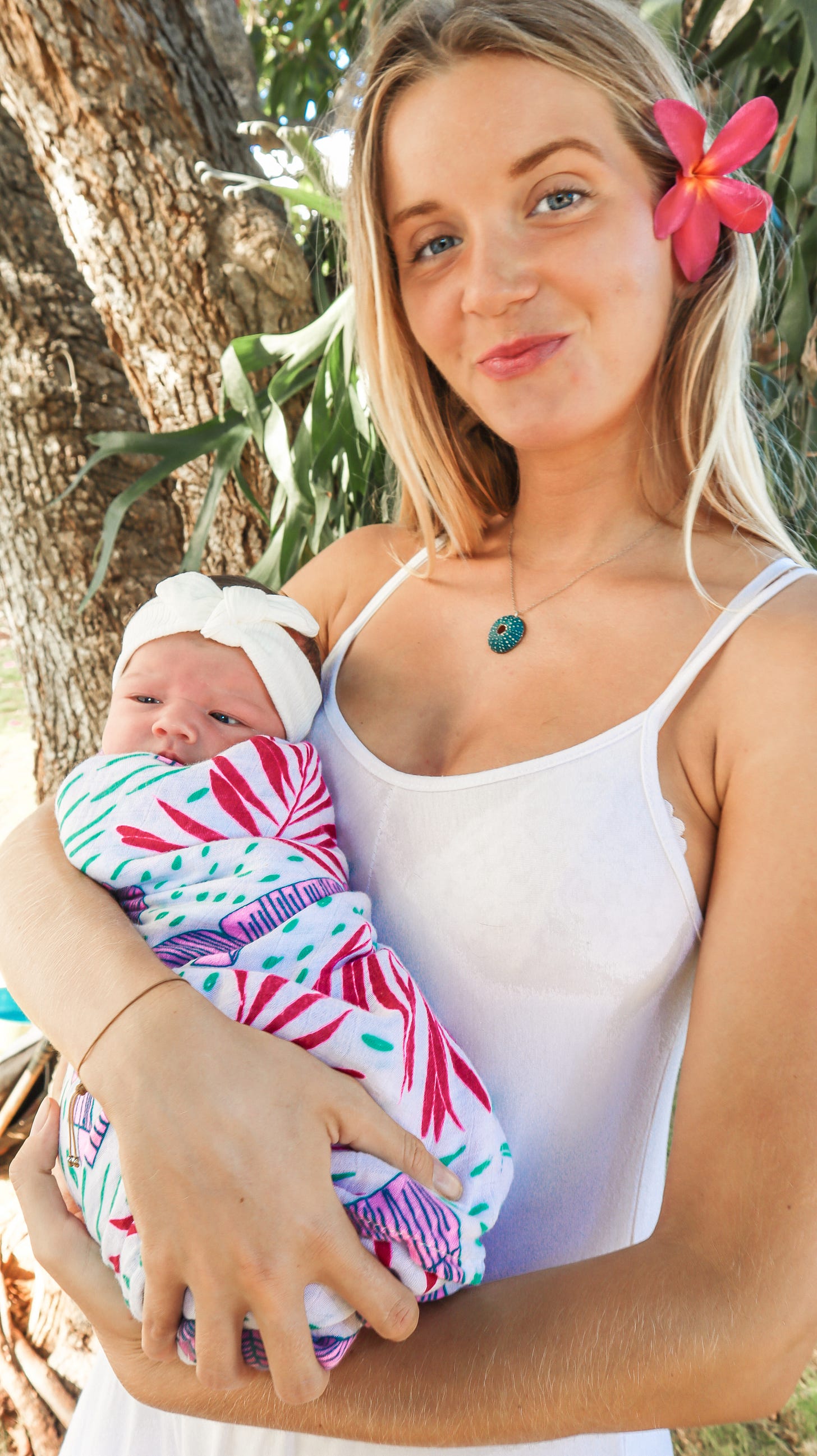Veronika Blanar had the kind of beauty you couldn’t ignore—tall, blond, poised like a dancer, and often wrapped in a mysterious calm. A surfing yogi from Slovakia, she carried herself with a quiet strength—the kind that comes from knowing hardship and greeting it with grace.
When she and her husband moved into the neighboring unit of our shared Hawaiian property, our doors framed a common garden. Seven families lived in that old multigenerational home. We have now split into separate lives, but we were once woven together by tea under the mango tree, and the way her dog, my cat, and the neighborhood giant tortoises played in the yard.
As her belly grew, so did our friendship. We celebrated her unfolding journey into motherhood—photos at nearby beaches, meditations under mango tree, and a conservative baby shower filled with intention. Veronika wrote affirmations on motherhood. She practiced yoga with presence. She surfed until she couldn’t.
Then Covid locked the world down.
Hawaiʻi’s isolation became both a blessing and a weight. No planes, no visitors, much less noise. More sea animals returned to the local reefs.
Veronika stayed grounded as long as she could. But in her final weeks, a loneliness crept in that even the ocean couldn’t soothe. Her mother couldn’t be there. Her loved ones in Slovakia couldn’t reach her. She confided her fears in me about being alone and. She felt isolated.
One afternoon she confided in me, tears filling her eyes. She was terrified of going through birth without support.
Still, she remained radiant.
In her ninth month, she asked for one last shoot while the blessing of her belly was still visible. She’d just come from a henna ceremony, and the intricate patterns that adorned her skin looked divine across the curve of her womb.
We went down to the local spot. The tide was calm, and we waded into the water together, both of us moving slowly. Nearby, a local unko was poking into the reef, trying to draw out a heʻe (olēlo Hawai’i for ‘octopus’).
Using my purple steel tako tickler, I extended a gentler offering to the he’e.
Tentacles emerged first—investigating the tickler and my fingers. Then I gently took the heʻe and placed it on Veronika’s belly.
Now, I’ve seen heʻe turn pale white before—when they’re startled, or when they’re trying to vanish. But this one remained it’s natural earth red color. Unbothered.
The he’e didn’t flinch or squirm. It simply settled and floated with Veronika and baby for quite some time.
Eight arms draped around her round belly, embracing her softly—like it knew. Like it was blessing her, and the baby.
Veronika looked down and smiled, part nerves, part wonder. Her eyes said, Is this okay? but her body stayed still, open, trusting.
We took photos of the heʻe’s embrace—the way its arms curved protectively around the life inside her.
When we emerged, we were covered in salt and sun. Our skin sticky with sea, our spirits full. We didn’t say much. We didn’t need to.
Just 32 hours later, Veronika went into labor.
In the final days of her pregnancy, she found herself facing the hospital’s strict COVID policies, limiting who would be by her side.
And when they returned from the hospital, baby swaddled in their arms, she smiled with relief. Yoga had prepared her for labor—4 hours—no tearing. She knew she had made the right choice.
“I labored for about 24h with active labor being roughly 4h. I labored at home with my doula. Once my water broke, we then got to the hospital at 5.30am and Arielle was born at 7.18am! no tearing, no complications and no pain medication/ epidural. Just a natural, unmedicated empowering birth!”
One week later, we gathered again beneath the mango tree.
Same roots, same light—but the world was different now. Arielle was here.
We took their first family photos in the garden where it all began.
No poses or fanfare. Just people learning what it meant to be a family.
And for the first time in weeks, Veronika didn’t feel like she was carrying it all alone.




